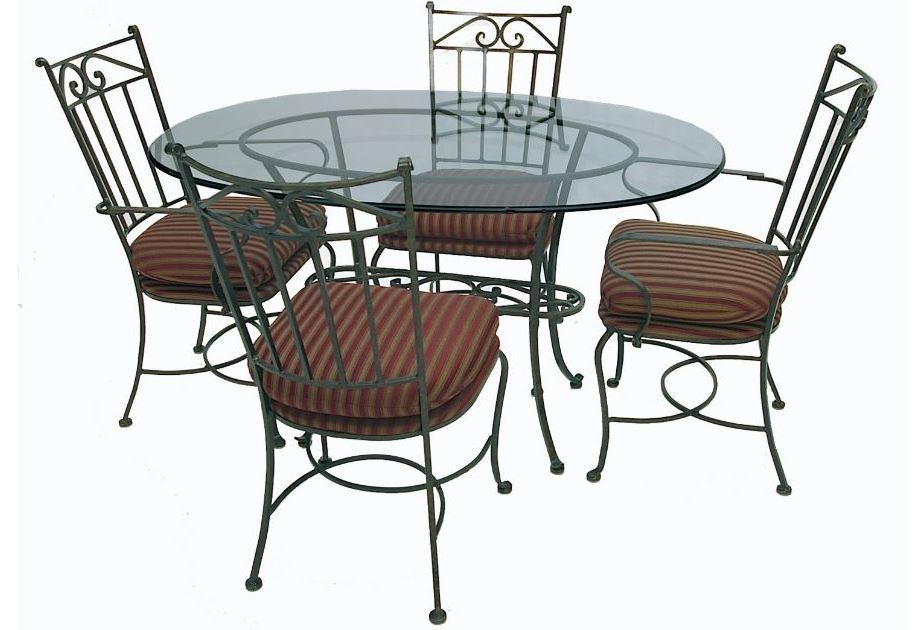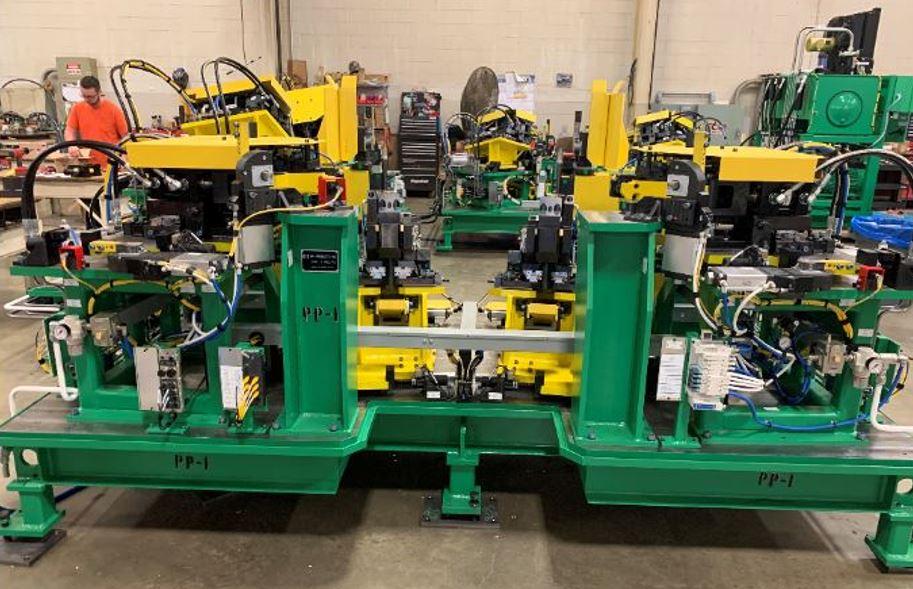Editor-in-Chief
- FMA
- The Fabricator
- FABTECH
- Canadian Metalworking
Categories
- Additive Manufacturing
- Aluminum Welding
- Arc Welding
- Assembly and Joining
- Automation and Robotics
- Bending and Forming
- Consumables
- Cutting and Weld Prep
- Electric Vehicles
- En Español
- Finishing
- Hydroforming
- Laser Cutting
- Laser Welding
- Machining
- Manufacturing Software
- Materials Handling
- Metals/Materials
- Oxyfuel Cutting
- Plasma Cutting
- Power Tools
- Punching and Other Holemaking
- Roll Forming
- Safety
- Sawing
- Shearing
- Shop Management
- Testing and Measuring
- Tube and Pipe Fabrication
- Tube and Pipe Production
- Waterjet Cutting
Industry Directory
Webcasts
Podcasts
FAB 40
Advertise
Subscribe
Account Login
Search
The punch at the center of it all
One holemaking tool continues to connect a diverse metal fabricating industry
- By Dan Davis
- December 18, 2020
- Article
- Punching and Other Holemaking
For most of the 20th century, metal fabricators relied on an ironworker and a punch to make holes of a consistent size. It proved to be such an efficient method that a lot of manufacturers and shops still use the approach to this day.
But holemaking is one of the most common operations in the world of sheet metal and plate manufacturing, so it makes sense that companies gravitated to more efficient means to accomplish the task. The last 30 years have seen the emergence of laser, plasma, and waterjet cutting technologies that can produce holes of various tolerances in a lot of materials. Even a drill, which could make a hole in a piece of structural steel in 10 to 20 seconds, can do the job today in 3 to 5 seconds. Manufacturers have a plethora of choices when it comes to holemaking, but the punch still remains relevant even if the ironworker is no longer the metal fabricating workhorse on the shop floor that it once was. In a way, the punch is kind of symbolic of how things change while also staying the same in the metal manufacturing world.
Holemaking of a Traditional Kind
Jeff Sizemore started his job running Mining Manufacturing, Salt Rock, W.Va., at a crucial time. The company needed to transition to new work because its traditional mining customer base was drying up. The administration of President Barack Obama pushed for cleaner energy, proving to be no friend of the state’s coal mining industry.
In an interesting twist, Mining Manufacturing found new customers in the solar industry, fabricating the post systems on which the giant panels sit. The posts are actually huge I-beams that are driven deep into the ground. The company uses its 300-ton press brakes to punch slots as large as 0.6875 by 3.5 in. in the web and flanges of I-beams.
“That’s the type of work we’re doing now,” Sizemore said. “We’re doing about 2,000 tons per month. We’re a little West Virginia company doing that.”
Sizemore and the company’s 27 employees have also ventured into truck and trailer manufacturing. These large structural shapes have much simpler holes, but they still challenge the punches, as some of the workpieces have as many as 12 holes put in them.
“These beams that the guys are handling can be between 400 and 500 lbs.,” he said. “Well, we don’t pick them up. We use forklifts and roller systems to move them around.”
Leaning on a punch design specialist has allowed Mining Manufacturing to focus on the business and keep things moving forward, Sizemore said. It’s good to have a supplier that can not only design the special tooling that is needed, but also suggest changes, such as the use of a die block for a large slot instead of a more traditional round die, for aggressive punching jobs.
Dan Timmerman is fighting the good fight of survival as well. He’s the second generation to run Timmerman Manufacturing, a Conover, N.C.-based business that has been making metal component parts for the wood furniture industry since 1962.
Needless to say, the furniture industry has changed a great deal over the past couple of decades, as almost everything was sent overseas, mostly to China. Timmerman Manufacturing hung in there with a core collection of customers and by expanding its fabrication capabilities to include railings and gates. In 2014 the company added a powder coating line that has 200 hooks on it and a 10- by 10- by 25-ft. oven for curing long pieces of metal.
“You either evolve or dissolve,” Timmerman said. “We’re definitely not China, and we’re never going to be like them. We’re going to make what a customer needs, and then we’ll have it available to them as soon as possible.”
Luckily, some of that furniture manufacturing is coming back. With that reshoring activity comes a desire to have the metal decorative parts made domestically as well.
“Once the manufacturers figured out that you didn’t get the same color or the same quality … we started telling people that we were able to make whatever they wanted and they could get less than a container load. You get the same color and consistency from order to order,” Timmerman added. “And if you needed to talk to me, you could chew me out in English and I’d be about 15 minutes away, instead of half of a world away.”
Timmerman Manufacturing is working with gauge material, but the punch tooling is still vital. An example of a part is an “ear,” as Timmerman calls it, that has a punched hole on it, which is then welded to a metal tube. The end customer then uses a screw to connect the metal tube to the wooden piece of furniture.
Like Sizemore with Mining Manufacturing, Timmerman said that by being able to lean on a punching tool expert, his company has been able to capture efficiencies in manufacturing, even though the shop doesn’t have the latest in automation technologies. Timmerman pointed to a specialty punch and die that can cope tubing as something that has proven to be valuable to the company. The tooling, which sits in a 7-ton punch press, knocks out the shapes in the 0.75-in.-dia. tubing quickly and easily, Timmerman said.
“It filled a big gap that we had,” he said.
Bob Olson is the owner and president of American Punch Co., Euclid, Ohio, the designer and maker of the punches Mining Manufacturing and Timmerman use. He’s been around toolmaking since 1976, and in 1990 he and his father started American Punch. He has seen the market for his company’s products gradually shift over the years, from traditional ironworker usage on things like plate and beams to more specialty applications in metal forming. In a way, the business remains the same in the sense that they have to be open to hearing what the customer needs and seeing if they have tooling in stock, if they can modify in-stock tooling for a quick turnaround, or if they have to make special tooling. The big difference is that those folks in the stamping business work in a much more precise manufacturing world.
“With the ironworker tooling, you can usually work with a couple of thousandths,” Olson said. “In stamping, you are working with tolerances within a couple of tenths.”
The continual shift in business has pushed American Punch to expand a couple of times over the past 12 years. Two 25,000-sq.-ft. expansions, one in 2008 and another in 2018, created room for more advanced equipment for manufacturing tooling and for additional engineering workspace.
Olson said over the past couple of years the company has invested more than $3 million in new equipment. That covers state-of-the-art wire EDM, machining centers, multiaxis lathes, and 5-axis grinders that can deliver the accuracy and repeatability necessary to make precision tooling for the metal forming market.

With coal mining slowing down dramatically, Mining Manufacturing has taken on new projects, such as punching holes in structural beams that are used to support solar panels. The punching tooling is important as it must stand up to the large press brake tonnages and the structural steel.
The new equipment also helps with quicker turnaround of tooling orders. A lot of the non-value-added activity, such as material handling, has been eliminated.
“We used to run a workpiece on one machine, take it to another one, and then finish it in another one. Now we have machines that will do all three, even four or five, operations all on the same machine,” Olson said. “We’ve had to adapt our business like this just to remain competitive.”
Holemaking of a Precision Kind
Bay Products, established in 1985 and located in Fraser, Mich., is one of these precision manufacturers that sources its punching tooling on a regular basis. It’s a manufacturer of punching and piercing systems for workpieces that have already been welded, such as truck frames and engine cradles. These systems are designed to maintain high tolerances so that precise mating and assembly of components can take place later.
Tom Bayagich pointed out that his company, too, has changed over the years. When the business was first starting out, manufacturing was much more of a high-volume nature. (In fact, the company actually was an advertiser in The FABRICATOR in those days.) Now the volumes are lower, and OEMs are looking for more cost-effective ways to punch holes in workpieces than manual drilling.
“We’ve turned into a specialized custom designer and custom builder,” Bayagich said of his 22-person company. “We don’t supply anything that is off-the-shelf like a press or a piercing unit.
“So we built up our niche market, mostly automotive,” he continued. “We service some other markets, of course, such as working on solar products and electric vehicles.”
The specialized equipment needs specialized tooling as well.
“Everything that we order is specials,” Bayagich said. “You look underneath a truck and you think that a 20-mm hole is a 20-mm hole, but it’s not.”
So what kind of tolerance are we talking about for this type of work? The actual holes sizes are around 0.005 in. and sometimes even less than that, +/- 0.002 in., according to Bayagich. The real challenge is holding tolerance over the entire length of the workpiece. The location tolerance can be anywhere from 0.25 mm to 3 mm across an entire truck frame, which can be difficult to hold.
“That’s pretty tight because when you weld those truck frames, they turn into bent and deformed structures,” Bayagich said.

Timmerman Manufacturing, a manufacturer of wrought iron furniture and metal parts for the wooden furniture industry, has been around long enough to see furniture manufacturing sent overseas and now coming back to North Carolina. It relies on punch tooling to make holes and slots in the metal pieces that help to hold furniture together.
Bay Products works on about 20 to 30 projects during a year, most with lead times of at least six months. Urgent tooling requests aren’t always needed, so delivery of punch tooling in a six-week time frame works out OK.
Bayagich said that they will lean on their suppliers like American Punch to talk about more exotic tooling needs. Discussions about cryogenics and carbide tooling have occurred as Bay Products is faced with more challenging punching and piercing requests from its customers.
Still Serving the Customer
Even with the dichotomy in customers, they still have the need for punches. They may have different requirements and time tables, but they still need to make holes.
Olson jokingly said that things were much easier when tolerances were that of “a football field instead of a pinhead,” but as most of American Punch’s customers have learned, evolution is a necessity for survival.
So that’s why American Punch has made investments. Olson pointed out how the company now has about 10 different types of software packages just to accommodate the many different ways that customers send them prints and drawings to be able to pull out all the details embedded in the customer files. It sounds meticulous, maybe even overkill, but that’s where manufacturing is today. Metal fabricators and manufacturers still need holes; they just need to make them faster, consistently the same size, with good quality, and at an acceptable price.
As Timmerman said, “You either evolve or dissolve.”
About the Author

Dan Davis
2135 Point Blvd.
Elgin, IL 60123
815-227-8281
Dan Davis is editor-in-chief of The Fabricator, the industry's most widely circulated metal fabricating magazine, and its sister publications, The Tube & Pipe Journal and The Welder. He has been with the publications since April 2002.
Related Companies
subscribe now

The Fabricator is North America's leading magazine for the metal forming and fabricating industry. The magazine delivers the news, technical articles, and case histories that enable fabricators to do their jobs more efficiently. The Fabricator has served the industry since 1970.
start your free subscription- Stay connected from anywhere

Easily access valuable industry resources now with full access to the digital edition of The Fabricator.

Easily access valuable industry resources now with full access to the digital edition of The Welder.

Easily access valuable industry resources now with full access to the digital edition of The Tube and Pipe Journal.
- Podcasting
- Podcast:
- The Fabricator Podcast
- Published:
- 04/16/2024
- Running Time:
- 63:29
In this episode of The Fabricator Podcast, Caleb Chamberlain, co-founder and CEO of OSH Cut, discusses his company’s...
- Industry Events
16th Annual Safety Conference
- April 30 - May 1, 2024
- Elgin,
Pipe and Tube Conference
- May 21 - 22, 2024
- Omaha, NE
World-Class Roll Forming Workshop
- June 5 - 6, 2024
- Louisville, KY
Advanced Laser Application Workshop
- June 25 - 27, 2024
- Novi, MI


































